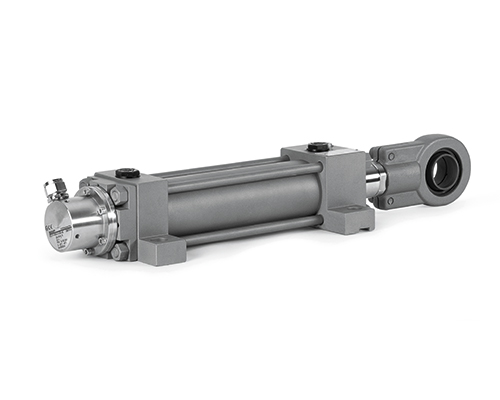Cushionings’ profiles are designed to reduce the cylinder speed before the rod contacts the mechanical stroke-end, dissipating the energy with limited pressure spikes. These hydraulic dampers also reduce mechanical shocks.
Cushionings are available:
"FAST" version for speed > Vmax
"SLOW" version for speed ≤ Vmax

The adjustable versions are equipped with cartridge valves to increase max damping energy extracted from cushionings chart in table
B015 (section 7.4) or to optimize the cushioning performances in different applications.
Proximity sensors required fast and adjustable cushionings (type 1, 2 or 3) and they will be available in subsequent configuration steps.

